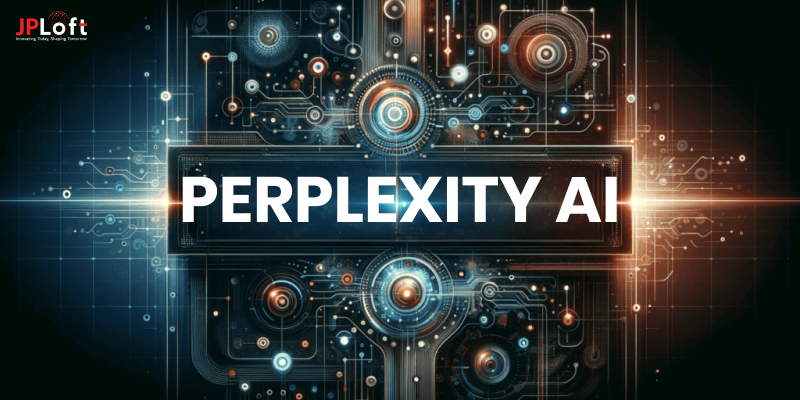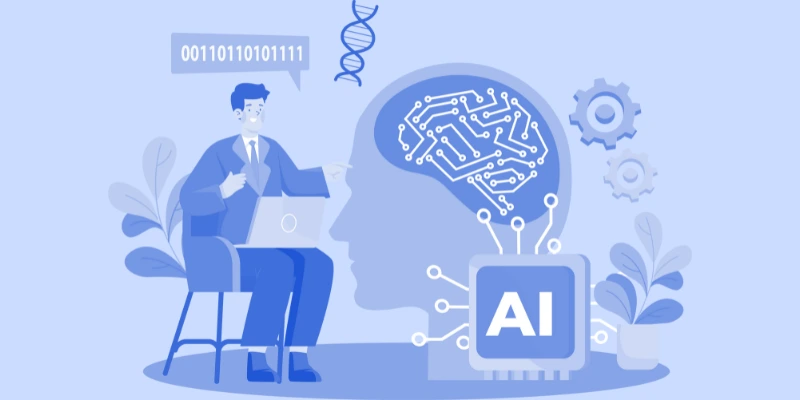Artificial Intelligence (AI) has expanded into various subfields. Two are called conversational AI and generative AI. While both are under the AI umbrella, they have distinct features and functions. Conversational AI is an excellent tool for comprehending human input and facilitates interactive dialog, similar to the one used in voice robots and virtual agents. However, Generative AI Solutions is a pro at creating original material from various data inputs and demonstrating creativity.
As AI technology develops, it is crucial to understand the difference between conversational AI and generative AI. Conversational AI vs. Generative AI: Which one can help boost your contact center's performance and allow you to achieve your CX objectives? Globally, the development of AI has opened the potential for new levels of efficiency for team leaders and managers. Although the effects of modern AI algorithms are worldwide, they're most evident in the call center. Over the past year, we've lost track of the number of contact center, CRM, and CX software providers launching advanced AI tools for the customer service team.
Although ChatGPT, Microsoft Copilot, and solutions like the NICE Enlighten AI suite are driving attention to generative AI growth, it's not the only technology creating noise. Conversational AI is gaining traction as an essential component of contact center success. Which solutions are you looking to use, and must you decide between one or both? This is a guide for using conversational AI and Generative AI in CX.
What Is Conversational AI?
As technology evolves, AI Development Services and conversational AI have become practical tools for facilitating real-time, two-way communications between people and software. Conversational AI concentrates on understanding human input and immediately offering accurate, pertinent responses. Its primary functions are:
Natural Language Processing (NLP)
This technology allows conversational AI to analyze and interpret written and spoken human speech by discerning the intention behind each word.
Natural Language Generation (NLG)
Conversational AI uses NLG to create human-like reactions utilizing the system's data to convert it into clear, simple-to-understand text or spoken words.
Also Read: Cost To Build Artificial Intelligence Project
Contextual Understanding
Conversational AI analyzes the context in which a conversation occurs to ensure seamless and relevant conversations. It may also consider factors like previous interactions, user preferences, and awareness of the environment.
Learning Through Adaptation
Conversational AI systems can continuously increase efficiency by gaining knowledge through user interaction and updating their information base with the latest developments.
Ways Conversational AI Is Transforming The CX

Conversational AI has been the foundation for many of the advancements in the customer experience we have come to expect nowadays. Below are some significant areas where conversational AI Applications In Customer Experience.
Chatbots
Some chatbots are basic and advanced, and theoretical AI drives them. Chatbots that are traditional use rules and follow a predefined program to answer questions from customers. When a user asks a surprising question, it is easy for the bot to get lost. Conversational chatbots, on the contrary, possess the ability to interact beyond the boundaries of their program. Instead, they employ some form of machine learning called Natural Language Processing (NLP) to identify speech and replicate human conversations. Chatbots with conversational capabilities can deal with difficult questions, communicate through multiple channels, and learn through interaction during the course.
Also Read: AI Chatbot Solutions You Can Consider for Your Business
Interactive Voice Response (IVR) Systems
It's all too common to dial a toll-free number and get asked to pick among a few alternatives. This is an old-fashioned IVR system, and it's got many of the same issues traditional chatbots have - especially the fact that it doesn't know an input that isn't part of the scripted responses. Nowadays, IVR systems are receiving an enormous boost thanks to conversational AI. By using natural processing of language (NLP),IVR systems can detect conversational languages and provide more exact and personalized responses. This means IVRs don't need to be complicated. IVR does not require lengthy and confusing menus. Instead, the customer can explain the reason for calling and receive the correct reply or be transferred to the appropriate representative.
Sentiment Analysis
How can a chatbot tell what a customer is feeling or unhappy with their experience? The analysis of emotions. This chatbot AI software can detect textual or verbal queues and identify a customer's mood, or it can use other techniques to reduce stress or redirect the customer's message to an agent. This is an example of a client whose Wi-Fi is not working, and he calls the internet service provider through chatbots to determine what's wrong. The answer is that an outage has occurred in the vicinity, and technicians are working to resolve the problem. Through sentiment analysis, the bot can recognize that the user is displeased by the response, and it reduces the user's purchase. Now, the customer doesn't seem so unhappy anymore.
What Is Generative AI?

It is one type of AI that can create new and original information, including text or images, using basic commands. Deep learning and neural networks enable it to generate highly innovative responses to questions or demands.
As with conversational AI, generative AI is now an increasingly common element of customer service. CCaaS providers provide companies with access to AI-powered generative bots, which can offer immediate coaching and support to the agent or boost the customer experience. Most of these applications are built upon the principles of conversational AI by Artificial Intelligence Development Company, improving bot efficiency by gaining access to substantial language models (LLMs).
In addition to the use of NLP technology, the vast majority of artificial intelligence (AI) solutions based on generative AI systems depend on:
Training In Data
Generative AI models are trained using huge datasets that include videos, sound, images, and texts. Multi-modal models can then respond to various input types.
Also Read: Key Components You Need to Build an AI System
Neural Networks And Deep Learning
Generative AI solutions employ deep learning algorithms and neural network structures, such as the generative adversarial network, to analyze and process complicated data patterns.
Generative Models
Utilizing neural networks that are based on neural networks, using neural networks, the AI machine creates generative models. For example, in the context of "GAN," the generator creates content, and the discriminator analyzes its performance against the existing information.
Learning And Refinement
As with conversational AI, generative AI models use machine learning to fine-tune and enhance their performance over time. The models can be adjusted regularly to increase the accuracy of their output.
Opportunities For Generative AI In Customer Experience
We don't see robotics taking over our call center employees' tasks; instead, they'll enhance their work with suitable instruments to operate with excellent skill and confidence. Custom AI Development Company have found that top-performing agents in contact centers experience lower attrition rates than those who perform poorly. Therefore, one way to end the endless cycle is to make each agent an expert. Let's see how this plays out using generative AI.
More Robust Knowledge Centers
It's a joke to enter a call center and notice agents' desks adorned by sticky notepads; then, you are dealing with a problem in the knowledge center. Agents are asked many similar questions daily, so they write their answers on sticky notes to be prepared whenever needed. Knowledge centers powered by machine learning have already done a great job addressing this problem by delivering solutions to agents through tools within their contact center technologies. But, with the advent of generative AI, things will get more efficient. Using existing information bases, manuals or FAQs, case studies, or any other guide gene, relative AI consumes the entire content and generates solutions to every question agents encounter.
Also Read: Guide to Understanding and Using AI Models
Suggested Responses
Canned responses are helpful, but they're restricted in terms of the effective amount for employees, resulting in a limit in productivity. Voice call scripting works only in particular, repeatable situations. Tools for suggested responses will utilize transcribing data from contacts in the past to determine and anticipate the optimal solution to an inquiry or response. Thanks to generative AI technology, the tools are available on voice and chat channels.
Real-Time Coaching
Traditional coaching methods that rely on the post-call process or analytics have a longer time lag between an interaction and a coaching event, which reduces the value that instant feedback can give. Using generative AI, natural language processing agents and supervisors can offer quality advice and coaching immediately. Current feedback can benefit new associates regarding ramp-up times regarding quality, compliance, and conversion rates.
Differences Between Conversational AI And Generative AI

Conversational AI and Generative AI are two advanced areas of artificial intelligence with distinct functions and capabilities, notably in interaction with people and data processing.
Input And Output Of Data
The significant difference between these two fields is in the form of information input and output. Conversational AI is focused on comprehending and responding to human input and aims to create interactive conversations. Generative AI uses a range of data inputs and produces original content, demonstrating creativity.
Application And Use Cases
Conversational AI typically serves customer support, providing better customer experiences and effective communication. Generative AI expands its capabilities to create content, enhancing creativity and autonomically creating diverse types of content.
Models And Techniques That Underlie Them
Conversational AI is based upon NLP and the dialogue system, allowing it to understand and react contextually to user questions. Generative AI utilizes the power of deep-learning models, GANs, and autoregressive strategies to generate content independent of any direct human interaction.
Interaction With People
Conversational AI has been developed to replicate human speech patterns and aims to involve users in interactive dialogs and problem-solving. Conversely, Generative AI operates autonomously and produces content without human involvement, demonstrating its ability to develop original content.
Conversational AI vs Generative AI For CX
While conversational AI and generative AI have different strengths, they both collaborate to enhance customers' experiences. Software like Microsoft Copilot for Sales is classified as a generative AI model but currently employs the same conversational AI. There are many ways in which contact centers can collaborate with generative AI and conversational AI. In particular, chatbots or AI bots could provide better solutions to customers' questions using the knowledge generated by back-end generative models.
Intelligent conversational assistants can analyze the information inbound to tickets and then assign problems to specific model-generative algorithms that can assist in the customer experience. Bots that talk can get insights from FAQs and knowledge bases created by AI that generate AI in discussions.
Ultimately, combining generative and conversational AI enhances both approaches' advantages. Although conversational AI bots can handle large volumes of regular interactions within contact centers and other areas. Solutions that use machines that generate information can tackle the more difficult queries and assist agents. As the two techniques continue to evolve, we'll see CCaaS and contact center executives introduce more tools that permit users to create their own systems that use the very best of both.
In What Ways Do Conversational AI And Generative AI Collaborate?
However, this doesn't mean conversational AI cannot work with generative AI. ChatGPT is an example. It uses conversational AI to produce human-sounding responses, but the responses come from generating AI. Conversational AI is a safeguard to ensure that the created AI responses aren't off-track and that replies are more natural because of advancements in natural language programming. A few brands and AI Development Company are experimenting with limited generative AI forms in conversational commerce. To provide individual and personalized customer experiences across various sectors, such as healthcare, retail travel, tourism, and transportation.
How To Find Best AI Solutions For CX Excellence
Selecting an AI that is right for your system and seamlessly integrated into your CX system can be overwhelming. There are methods to get through the maze of AI to enhance Customer Experience (CX) and ensure your AI option is compatible with your company's needs. Completeness Connecting every pixel of the CX journey
Think of AI as a separate device and the connecting network running through every step of the customer's journey. A good AI solution for CX does more than enhance customer experiences; it connects all across the organization, ensuring everyone in your team gets unified insight. Look for AI as a bridge that weaves your customer's journey into a complete narrative, available to every person within your organization.
Reputation: AI Aligned With Your Brand Voice And Knowledge
Trust is the foundational element of extraordinary CX. The AI you select should reflect your brand's core values and expertise. This isn't just about correct outputs; it's also about aligning with your branding value and voice. Find AI solutions that draw on your CX team's knowledge, experience, and historical information to ensure that outputs are in tune with your clients and increase their trust in your company's image.
Accuracy: Create Exceptional Experiences Informed By Optimal CX Outcomes
Accuracy is crucial in AI-driven CX. Choose solutions based on previous models developed and tuned to deliver the best customer experience. General AI, as well as generic models, may serve in specific scenarios. Still, the effort and time required to provide exact results your customers and employees can trust surpass the advantages these general options bring.
Look for AI, which is designed especially for CX interactions. It is based on past data to allow the AI to be tuned to provide optimal outcomes for every type of interaction. They consider your customer's previous behavior and inquiries, ensuring precise predictions and responses aligned with your customer's requirements.
Speed: Agile Deployment And Evolution
In the current business environment, agility is paramount. A good AI solution to support CX must be quick to implement and flexible enough to grow with your company's needs. Look for solutions that permit rapid development with the help of a Custom Artificial Intelligence Development Company while also adapting to changing business needs and accommodating new applications quickly.
Conclusion
We've now discovered the core elements of a genuinely extraordinary CX AI; let's discuss the best ways to evaluate the possibilities of strategies. The first step is to define your CX goal. What issues on your journey to the customer can AI address? After you've identified these points, search for AI solutions that are in line with your goals. Do not settle for a universal solution. Instead, search for solutions that are flexible and change in ways that meet your individual requirements.
If you are evaluating possible AI partners, look into their experience. Find case studies and reviews of successful projects that align with your business or similar problems in your industry. Talk to the team members and learn about their tech, how they work, and their cooperation and support.
One of the most critical aspects often ignored is adaptability and scalability. Ensure that the artificial intelligence software you choose can grow with your business and adapt to any issues it might face or emerge. When speaking with an AI vendor, be sure to inquire about their vision for the future and strategies and also the product or company plan of action so you know what the future holds for the AI strategy. Keep in mind that the top AI to improve your CX doesn't just function as the tool you use; it's also an investment in your business's success, and a partnership with an AI company that is committed to this is important.
Incorporating AI in the CX strategy is an absolute must in 2024. However, it's about more than just using new technology. It's about deciding on the AI that enhances the customer-centric strategy; for the best results from the benefits of your CX AI, search for an option that's accurate and reliable, integrated into the framework of your CX technology, and flexible enough to be deployed swiftly and efficiently with minimal cost. Follow these principles as your reference. You'll be able to select the AI solution that integrates seamlessly with your business's objectives and improves all aspects of the customer experience.














Share this blog